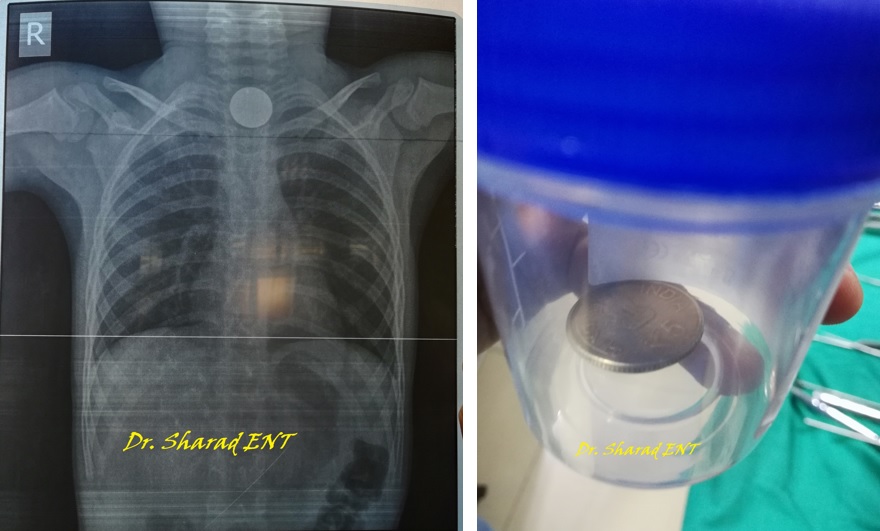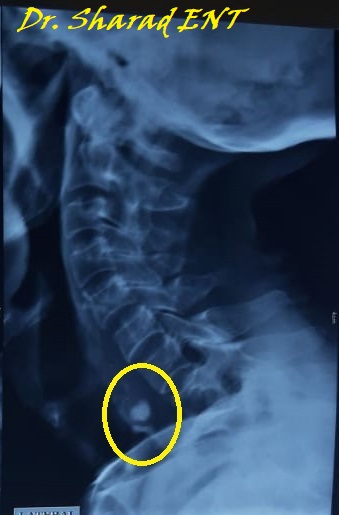This blog will focus on how various morbidities can be avoided if the elders of the family are alert around children who are less than 10 years old.
Today, the focus will be on ——
(I) Why do children eat anything which is harmful to them?
(II) Various FOREIGN BODIES that children INGEST (means eat) accidentally or while playing.
(III) Symptoms caused by foreign body ingestion
(IV) How to diagnose that the child has eaten a foreign body?
(V) Treatment
(VI) Prevention and Awareness
(I)Why do children eat anything which is harmful for them?
Foreign body ingestion occurs commonly in children due to numerous reasons:-
- A small child is naturally inclined towards oral exploration of their surrounding environment.
- They are fond of playing with objects by oral perception,
- They masticate their food insufficiently due to sparse dentition,
- They have impaired sense of judgement of differentiating edible from inedible articles
- Being capricious, they are much engrossed in playing even while consuming food.
(II) FOREIGN BODIES that children can INGEST(eat)
Foreign body ingestion is a common complaint in children less than 10 years old.
Objects that are frequently ingested include —
1. COIN
2. BUTTON BATTERY CELL
3. BUTTON
4. GLASS MARBLE
5. CRAYON
6. EARRING
7. SAFETY PIN
8. PAPER PIN
9. ZIPPER
10. NUT BOLT
11. SCREW
12. PLASTIC ITEMS,
13. BROKEN PIECES OF TOYS
14. PIECE OF WIRE, etc.
(III) Symptoms caused by foreign body ingestion
Signs and Symptoms of children after foreign body ingestion can be divided according to the age of the children.
–> Less than 2 years
–> Between 2 years -5 years
–> Above 5 years
SIGNS & SYMPTOMS IN CHILDREN LESS THAN 2 YEARS OF AGE
In prelingual children (prelingual means child < 2years old), the diagnosis of a foreign body gets difficult, particularly when the incident of foreign body ingestion is not witnessed and the history is not forthcoming.
A child with foreign body ingestion usually present with—–
- Dysphagia
- Pain
- Excessive salivation
- Refusal to eat or drink
- Drooling of saliva
- Stertor
- Symptoms of respiratory tract infection
Infants, young children (2 years – 5 years old) may present with —-
- Choking
- Refusal to eat
- Vomiting
- Drooling
- Wheezing
- Blood-stained saliva
- Distress
Older children (> 5 years old) may tell the parents about foreign body ingestion and localize the discomfort which is more or less the same as described above.
(IV) How to diagnose that the child has eaten up a foreign body?
- The History,
- Clinical examination, and
- X ray / CT scan…………………………collectively help in arriving at a diagnosis.
HISTORY: Diagnosis is a lot easier when parents give the history of foreign body ingestion.
EXAMINATION: When the parents are unaware of if their child has ingested a foreign body or not, then the diagnosis becomes difficult.
The doctors look for all the above-mentioned symptoms like pain in the neck or stomach, drooling of saliva, excessive saliva formation, wheezing, etc.
X-RAY / CT SCAN:
An X-ray or a CT scan of the neck or the chest can easily confirm the location, size, shape, number of ingested foreign bodies, and also help to distinguish whether the foreign body is in the food pipe or in the airway.
(V) TREATMENT
Many times foreign bodies can pass through the stomach and the intestines spontaneously.
However, parents should not attempt any maneuvers at home like putting a finger in the throat of the child to try to remove the foreign body.
Heimlich’s maneuver can help many times, but in some cases, it can worsen the situation. If the Heimlich maneuver is done in a foreign body that is partially blocking the airway, it can change the partial blockage to complete blockage leading to worsening of the condition of the child.

Direct laryngoscopy is an option to remove objects lodged at or above the cricopharynx (Point where the throat meets the food pipe)
Otherwise, rigid or flexible endoscopy may be performed when laryngoscopy is unsuccessful or for treatment of objects lodged below this area.
A 3-YEAR-OLD child with a coin stuck in the throat, which was removed by endoscopy

A 3-year-old child with BUTTON BATTERY Cell in the food pipe (Left)
A 5-year-old child with a button battery passed beyond the stomach and was present in the intestines (Right).

Foreign body stuck in the throat of a 4-year-old child.

A 2-month-old male child presented with a zipper stuck in his food pipe

(VI) PREVENTION and AWARENESS
If a child is left unattended with toys, these coins, button battery cells are small shiny things that appear attractive to children, which as a result pose a potential danger to becoming a foreign body.
Even if you go for a few seconds to say attend a call in another room, the child behind your back might put anything in his mouth.
The child will start having symptoms, but because you have not witnessed the child putting any foreign body in his mouth, you will think of it as any childhood illness, whereas you are losing a lot of precious time that could save your child.
Even seemingly harmless toys like soft toys where in place of eyes small buttons are stitched, children have a tendency to pull out these buttons and put them in their mouth while playing.
Toys with remotes should only be used for playing when any elder is around, and once the child is done with playing, the elder should keep these toys at a proper height where the child cannot have access to them.
If the child is demonstrating any of the symptoms or signs mentioned in Section III (under Symptoms), parents should immediately report to a hospital and get the child examined by a doctor who might ask the parents to get the X-ray of the child done.
Parents should not hesitate to get the child investigated even if it requires getting the CT scan done, because sometimes a CT scan gives a better idea than an X-ray.
In the end, It is the responsibility of the parents that they BUY ONLY THOSE TOYS for their children which are ABSOLUTELY FREE FROM CHOKING HAZARDS.
And even to check these “FREE FROM CHOKING HAZARD” labeled toys for any loose joints or loose stitches or anything that can possibly pose for your child as a choking hazard.
THANK YOU
WATCH INTERESTING ENT-related VIDEOS ON MY YouTube CHANNEL…..Dr.Sharad ENT Videos
MEDICAL ADVICE DISCLAIMER:
This blog including information, content, references, and opinions is for informational purposes only.
The Author does not provide any medical advice on this platform.
Viewing, accessing, or reading this blog does not establish any doctor-patient relationship.
The information provided in this blog does not replace the services and opinions of a qualified medical professional who examines you and then prescribes medicines.
And if you have any questions of medical nature, please refer to your doctor or the qualified medical personnel for evaluation and management at a clinic/hospital near you.
The content provided in this blog represents the Author’s own interpretation of research articles.

👍🏻👍🏻Very informative Sir
very usefull lnformation Sir Keep it up
👍good very useful information
Omg this can be very horrible situation, thanks doctor for enlighten us. We all should keep an eye on the children all the time.